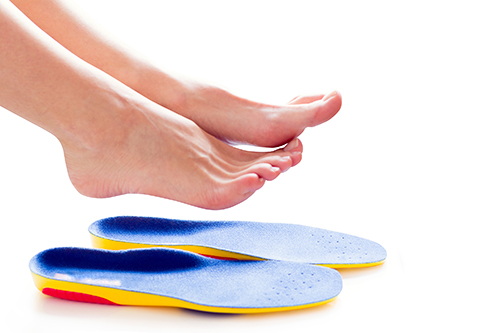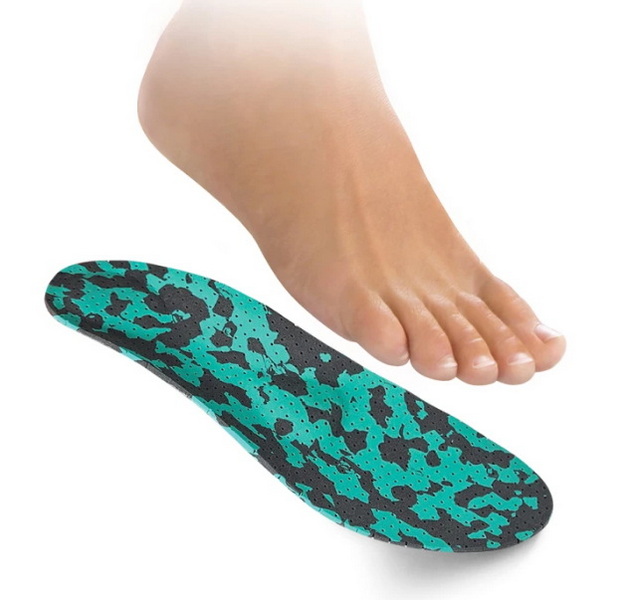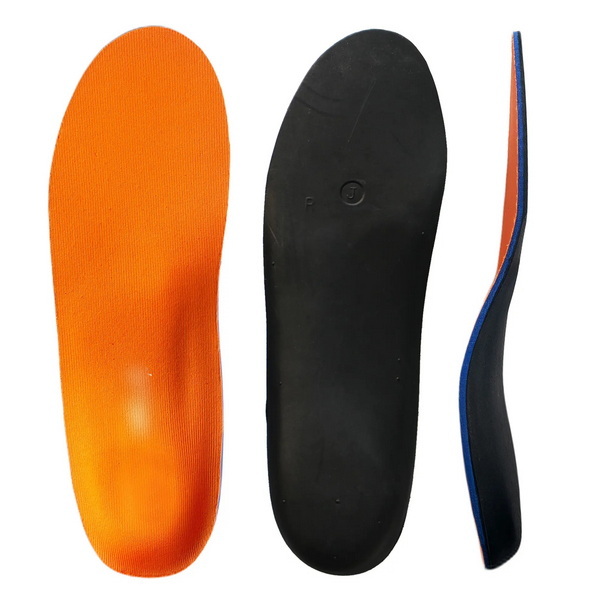










Content Menu
● Understanding What an Insole Is
● The Role of the Insole in Shoe Comfort
● Structural Components of an Insole
● Materials Used in Insole Manufacturing
>> EVA (Ethylene-Vinyl Acetate)
>> Latex Foam
>> Memory Foam
>> Leather
● Insole Manufacturing Process
● The Value of OEM Insole Manufacturing
● How Custom Insoles Boost Brand Competitiveness
● Technological Innovations in Insole Design
● Choosing the Right Insole Manufacturer
● The Future of Insole Development
● FAQs
>> 1. What's the difference between insoles and inserts?
>> 2. How often should insoles be replaced?
>> 3. Are all insoles one-size-fits-all?
>> 4. Can insoles relieve foot pain?
>> 5. Can shoe brands customize their insoles?
The comfort, performance, and longevity of your footwear are all heavily influenced by one key component — the insole. While often overlooked, this essential layer can make all the difference in how your feet feel throughout the day. Whether you're a shoe manufacturer, an international brand, or a wholesale distributor, understanding the structure and value of shoes insole is vital.

An insole—also known as a footbed or inner sole—is the removable or fixed layer found inside a shoe that provides comfort, support, and cushioning to the foot. It lies directly under the foot and above the outsole, acting as a buffer that absorbs shock and enhances balance. High-quality insoles make shoes more comfortable, ergonomic, and adaptable to different foot shapes and movements.
Insoles come in many different forms, depending on their functions. Some are designed for added comfort during long hours of standing, while others focus on performance enhancement in sports footwear. Insoles can be removable or glued permanently depending on the shoe type, such as sports sneakers, work boots, or casual loafers.
When you think about walking, running, or standing for long periods, your feet continuously endure ground reaction forces. The right insole plays a critical role in reducing strain and boosting comfort. Its functions include:
1. Shock Absorption – Reduces the impact on your heels, ankles, and joints, helping prevent fatigue.
2. Arch Support – Maintains proper alignment of the foot and distributes pressure evenly.
3. Moisture Management – Wicks away sweat to keep your feet dry and comfortable.
4. Cushioning – Adds softness and reduces pressure points caused by prolonged standing.
5. Thermal Regulation – Keeps feet warm during winter and ventilated during summer.
A highly popular material for insoles is EVA (Ethylene-Vinyl Acetate) foam. It's lightweight, flexible, and has exceptional cushioning properties. EVA insoles rebound quickly after compression and are suitable for both casual and professional footwear. Chinese manufacturers have mastered EVA foam molding technology, providing international brands with custom thicknesses, densities, and hardness options to meet varied design requirements.
An insole's design is far more complex than it appears. It may contain several technical layers:
- Top Layer: Usually made from fabric, mesh, or microfiber, this layer enhances breathability and irritant-free comfort.
- Cushioning Layer: Adds softness using EVA, PU, or latex foams to absorb shocks.
- Base Layer: Provides structure, ensuring stability and even pressure distribution.
- Heel Cup: Cradles and stabilizes the heel, reducing slippage.
- Arch Support: Strengthens foot alignment through molded or contoured structures.
Used in casual or dress shoes, offering lightweight cushioning and moisture absorption. They are suitable for people who spend several hours standing.
Custom-designed for correcting biomechanical issues such as flat feet or overpronation. These insoles often include medical-grade EVA or TPU supports.
Made for performance footwear, these insoles enhance shock absorption, stability, and flexibility during physical activities such as running or training.
Designed for high-pressure environments where workers spend long hours on hard surfaces. They include anti-fatigue and anti-slip features, often made with PU foam and reinforced heel support.
Developed through OEM and ODM processes to match brand specifications. They can be personalized with brand logos, customized materials, and unique ergonomic designs.

This material is highly elastic, lightweight, and temperature-resistant. It offers excellent shock absorption and is used in sports and daily footwear.
PU insoles provide durability and superior cushioning. They return energy during each step, making them ideal for heavy-duty or industrial footwear.
Breathable and moisture-absorbent with a soft touch. Perfect for shoes that prioritize comfort.
Conforms to the unique shape of the wearer's foot, redistributing pressure for a customized fit.
Naturally breathable and moisture-absorbing, leather insoles are elegant and durable, making them popular for formal shoes.
Producing insoles involves detailed engineering to meet design and comfort expectations. The major steps include:
1. Material Selection: Choosing the type and density of foam or leather.
2. Cutting & Shaping: The chosen material is shaped using machine-cutting or injection molding.
3. Compression Molding: Layers are bonded together under heat and pressure for precise shaping.
4. Surface Finishing: Textiles or perforated fabrics are applied for added comfort and breathability.
5. Testing and Quality Control: Each batch undergoes durability, flexibility, and compression tests before packaging.
These processes ensure that each insole not only fits perfectly but also retains its resilience over extended periods of use.
As a professional Chinese insole manufacturer and supplier, our OEM services support global footwear brands by creating fully customized designs. This process involves concept design, material selection, tool development, testing, and packaging.
Our OEM advantages include:
- Tailored arch height and heel support configurations
- Wide range of thickness and hardness levels
- Logo embossing or printing on the insole surface
- Environmentally friendly material selections
- Soft-touch textiles and anti-bacterial treatments
Collaborating with an OEM manufacturer enables brands to develop unique, cost-effective products that fit their market positioning perfectly.
Insoles are essential across various shoe types:
- Athletic Footwear: Enhance performance and reduce injury risks.
- Outdoor Boots: Offer insulation and extra grip.
- Formal Shoes: Improve internal comfort and appearance.
- Orthopedic Shoes: Provide foot alignment and support for specific medical conditions.
- Children's Shoes: Encourage correct posture and comfort during growth.
In every segment, the insole adds tangible value to both users and manufacturers.
When brands choose custom OEM insoles, they gain a competitive edge through superior quality and user satisfaction.
Benefits include:
- Enhanced brand identity through unique designs
- Improved comfort and customer satisfaction
- Reduced return rates due to better wearability
- Increased brand reputation for quality and innovation
In the global footwear market, customers are placing greater emphasis on comfort as part of their purchasing decisions. Custom insoles provide that extra comfort layer that sets a brand apart.
Modern insole production goes beyond simple foam cutting. Advanced technologies have entered the industry, such as:
- 3D Foot Scanning: Allows accurate mold shaping for different foot types.
- Ergonomic CAD Modeling: Ensures proper arch ratios and cushioning balance.
- Memory Gel Infusion: Integrates gel zones for concentrated pressure relief.
- Eco-Friendly Foam Blends: Combines recyclability and performance.
These innovations make today's insoles lighter, more breathable, and longer-lasting than ever before.
Finding a reliable OEM partner ensures consistent quality and timely delivery. The ideal manufacturer should have:
1. Years of industry experience with international clients.
2. Certifications for sustainable and safe materials.
3. In-house tooling and design capabilities.
4. Robust R&D departments for material innovation.
5. Quality management systems for precision and consistency.
An experienced manufacturer can adapt to different market needs while maintaining exceptional product standards.
To extend the life of insoles and maintain hygiene:
- Remove them to air dry after daily use.
- Wash gently with mild soap if necessary.
- Avoid machine washing or direct sunlight drying.
- Replace them once the cushioning loses elasticity.
Proper care keeps your shoes fresher and more comfortable, ensuring consistent performance over time.
The insole industry continues to evolve with sustainable materials and smart technology. We now see:
- Antibacterial Insoles: Prevent odor and fungal growth.
- Smart Insoles: Linked with mobile apps to monitor foot pressure and walking patterns.
- Recycled Materials: Incorporate post-industrial and bio-based foams to reduce environmental impact.
For global footwear brands, partnering with innovation-driven insole manufacturers ensures they stay ahead in both comfort and environmental responsibility.
So, what is an insole of a shoe? It's far more than just a simple insert—it's the core foundation of every shoe's comfort, support, and stability. Whether made of EVA, PU, leather, or memory foam, insoles balance design and function, making footwear more wearable and valuable.
As a leading Chinese insole manufacturer, we specialize in producing high-quality OEM and ODM insoles for global brands, wholesalers, and footwear producers. By blending modern technology with expert craftsmanship, we ensure every pair of insoles delivers not just comfort but excellence in every step.

Insoles are built into the shoe structure, while inserts are added components that can be removed or replaced for extra comfort.
Every 6–12 months or when the cushioning wears out and ceases to provide adequate support.
No. Insoles come in varying sizes, and some can be trimmed to match shoe dimensions.
Yes. Insoles featuring proper arch and heel support reduce discomfort and alleviate pressure on the feet, improving posture.
Absolutely. Through OEM/ODM manufacturing, brands can create tailor-made insoles reflecting their identity and functional needs.